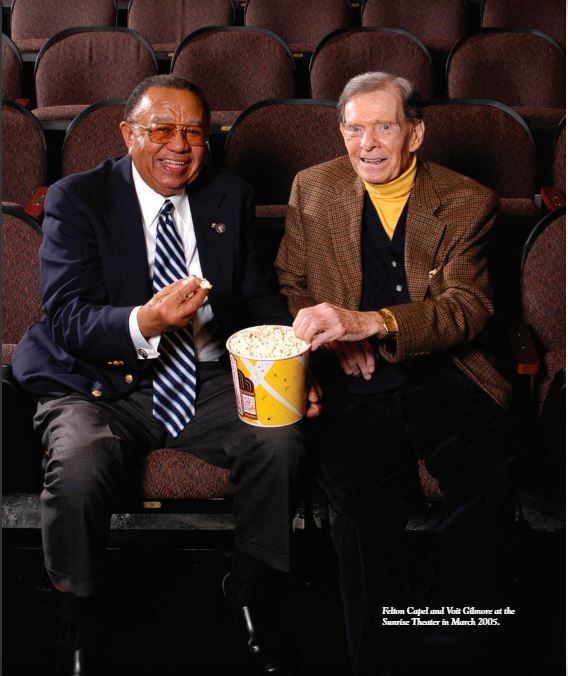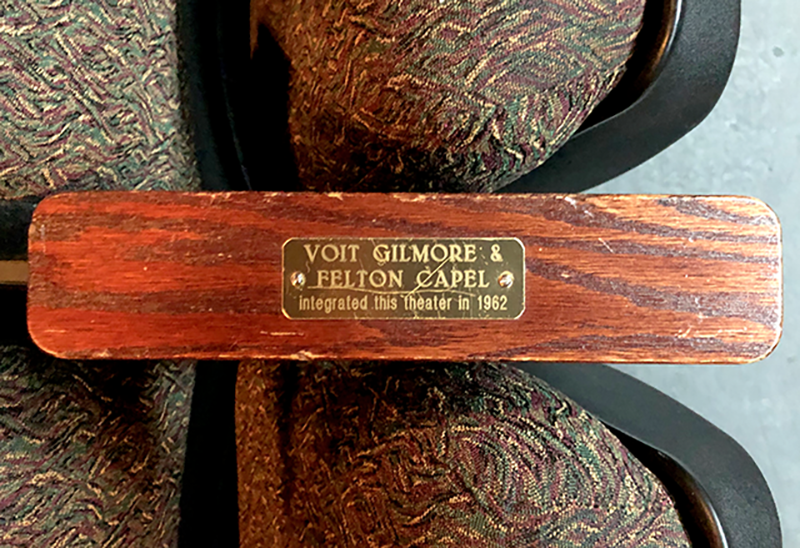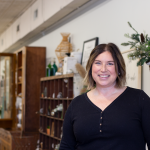This year marks the 60th anniversary since the late Felton Capel and Voit Gilmore peacefully took on racial integration in Moore County. Both men, known as two of Southern Pines’ most prominent civic and political leaders, were veterans, college graduates, entrepreneurs and family men. There was but one noticeable difference between the two during a time of segregation — Capel was Black and Gilmore was white.

How Did Capel and Gilmore Break Barriers?
In 1962, they decided to put forth their friendship, charisma and leadership to break down the racial barriers of segregated establishments in Moore County. Together, Capel and Gilmore bought tickets at the then-segregated Sunrise Theater in downtown Southern Pines to watch a film side-by-side, in two seats that were front-row-and-center of the then all-white lower level. That day marked the first time a Black person sat in the lower level of the theater. At the time, Black patrons would buy tickets and use a separate entrance to the balcony.
Their efforts continued with a bowling game at a segregated Southern Pines alley, and golf at Mid Pines Golf Club, one of the many segregated golf resorts in the area.
For each of these locations, Gilmore called his book of contacts to let them know their intentions beforehand. They were met with no resistance, and they were proud of the peaceful advancements in each of these locations. “I called Ernie Boros, the golf pro at Mid Pines (and the brother of PGA Tour golfer Julius Boros), ahead of time,” said Gilmore. “I told him I would be coming out to play a round of golf with Felton Capel, and I told him Felton was not going to be my caddie. And we played a round of golf together. There was no problem.”
Was the Work They Did Lasting?
In 1962, many efforts of integration were met with violence and restraint, especially in the South. This was two years before the United States passed the Civil Rights Act of 1964, which officially outlawed segregation in businesses such as theaters, swimming pools, libraries and workplaces.
Establishments across Moore County slowly made their way towards integration, but it wasn’t an instant switch following the visits of Capel and Gilmore in 1962. According to PineStraw Magazine, the Sunrise Theater went right back to their ways after the visit. They even added a partition to divide the all-Black balcony and provide a dedicated space for white patrons who wished to watch films from a higher vantage point.
It wasn’t until after the formation of the local Good Neighbor Council on June 18, 1963, many behind-the-scenes negotiations, peaceful demonstrations, and the passage of the federal Civil Rights Act that the Sunrise Theater’s ownership officially welcomed Black patrons to sit anywhere they pleased.

Are There Remembrances of Capel and Gilmore?
You’ll find nods to the legacy of Felton and Gilmore across the state, but it also continues in Moore County. There are plaques on two seats in the Sunrise Theater (and one in between them, above) honoring Capel and Gilmore for their efforts of 1962.
Gilmore donated land to Pinecrest High School, and Voit Gilmore Lane was named in his honor in the 2000s. In 2012, the adjoining road was renamed to honor Felton Capel. The two roads intersect at the traffic circle behind the high school.
Want to dive into a bonus read? Try The Making of Pinecrest High School, a Pilot Newspaper piece about the county’s first integrated high school and the challenges it faced.



